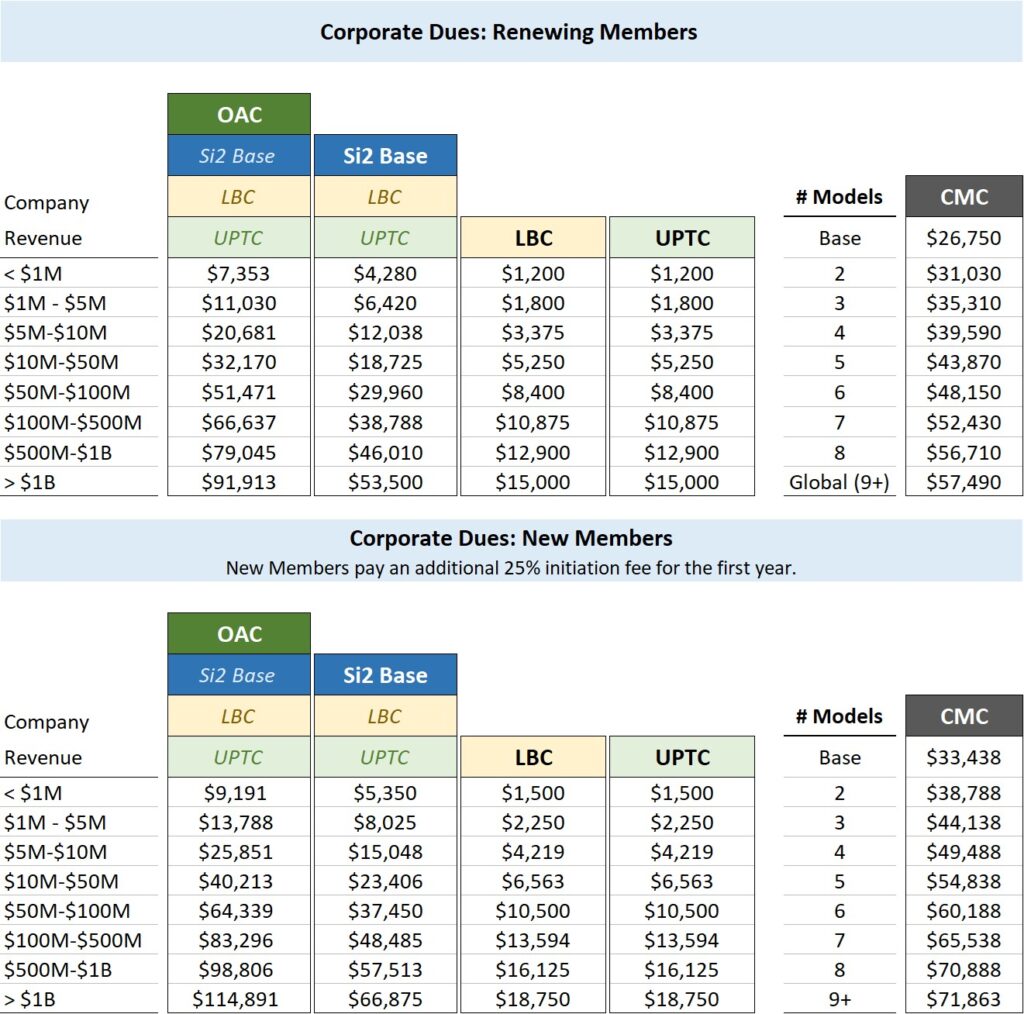Si2 has two classes of memberships that are used today: Corporate, and Academic. For each class of membership there are multiple ways to combine Coalitions and Si2 Base membership to best fit your needs.
Corporate members are any associations, partnerships, organizations, companies or corporations which research, develop, sell, use or promote the development, sale or use of electronic design automation tools, semiconductor equipment, semiconductor intellectual property (IP), or data management systems, or which design, market, or manufacture electronic products, or which provide products or services relating to such tools, systems or products. Corporate members pay annual dues and have voting rights.
Academic members are individuals enrolled or employed full-time at an accredited college or university, with research and/or coursework related to the electronic design automation, semiconductor, or electronics industries. They may also be individuals who are self-employed, and who provide research and/or consulting services to the electronic design automation, semiconductor, or electronics industries. Academic members do not pay annual dues and are not granted rights to vote on any item under consideration by Si2.
For all memberships, there is an initiation fee added to the first year of membership for new members. To get an estimate of the dues for your company please select the appropriate membership combination and use the tables below to determine the total cost. Dues for the Compact Model Coalition (CMC) depend on the number of standard models designated, dues for the other memberships are based on the total corporate revenue. Dues do not change with the number of users within the member company.
The Si2 Base membership enables members to participate in any Special Interest Group (SIG) or OpenStandards working groups (OSWGs) of their choosing. The SIGs and OSWGs form and evolve over time and this provides members the ability to stay engaged as the number and scope grows. Si2 Base members can also join the Unified Power and Thermal Coalition (UPTC), and the LLM Benchmarking Coalition (LBC) at no additional cost.
The OpenAccess Coalition (OAC) membership provides access to all OpenAccess content and includes the Si2 Base membership. OAC members can also join the Unified Power and Thermal Coalition (UPTC), and the LLM Benchmarking Coalition (LBC) at no additional cost.
The Unified Power and Thermal Coalition (UPTC) pulls together industry leaders to improve UPM collateral, gain access to experts, and obtain engineering support. Although the Unified Power and Thermal Coalition (UPTC) membership is included with the Si2 Base and OAC memberships, one can choose to join the UPTC separately.
The LLM Benchmarking Coalition (LBC) is new and pulls together industry leaders to expedite the development of high-quality LLMs for semiconductor design by creating relevant and comprehensive evaluation datasets and metrics for semiconductor design problems. Although the LBC membership is included with the Si2 Base and OAC memberships, one can choose to join the LBC separately.
Although many Compact Model Coalition (CMC) members are also Si2 Base or OpenAccess Coalition members you do not need to be one of those members to join the CMC. CMC dues are also calculated differently than the previously discussed memberships. Selecting the row in the CMC dues table that reflects the number of models you wish to designate will determine the annual dues.
Once you have selected the memberships that interest you, please email our membership team at membership@si2.org and they will set up some time to review the associated agreements with you and help you complete the process.

Email membership@si2.org